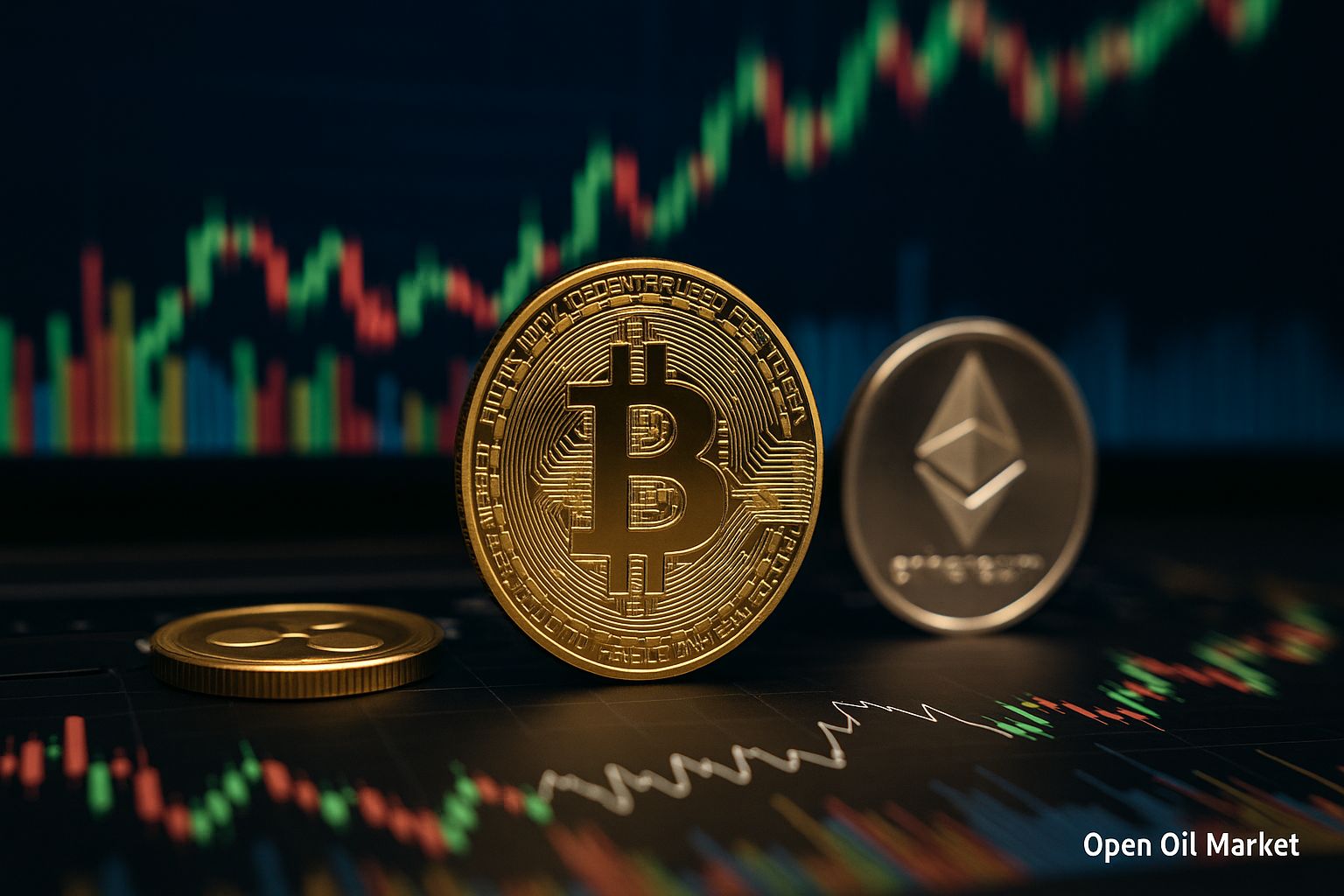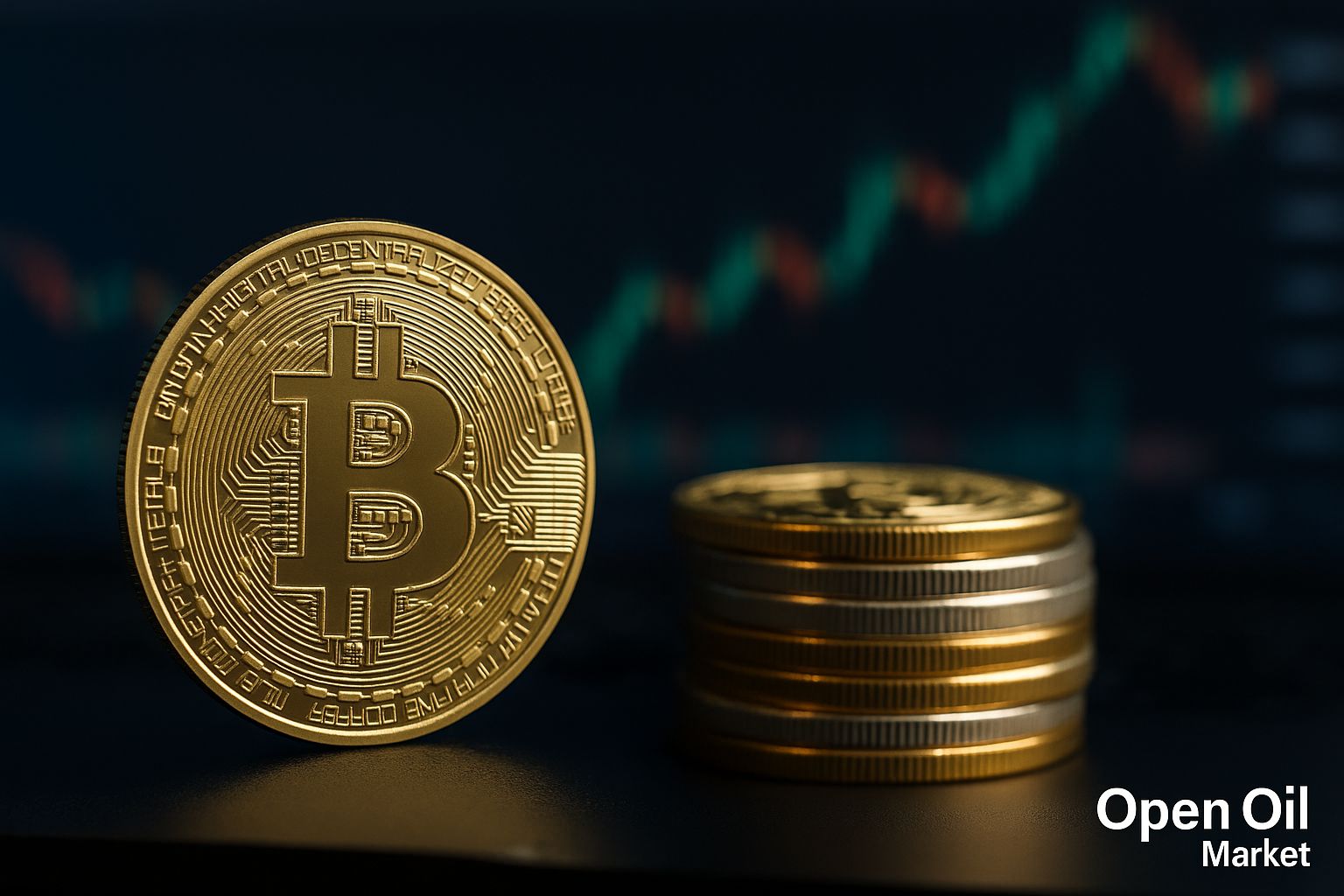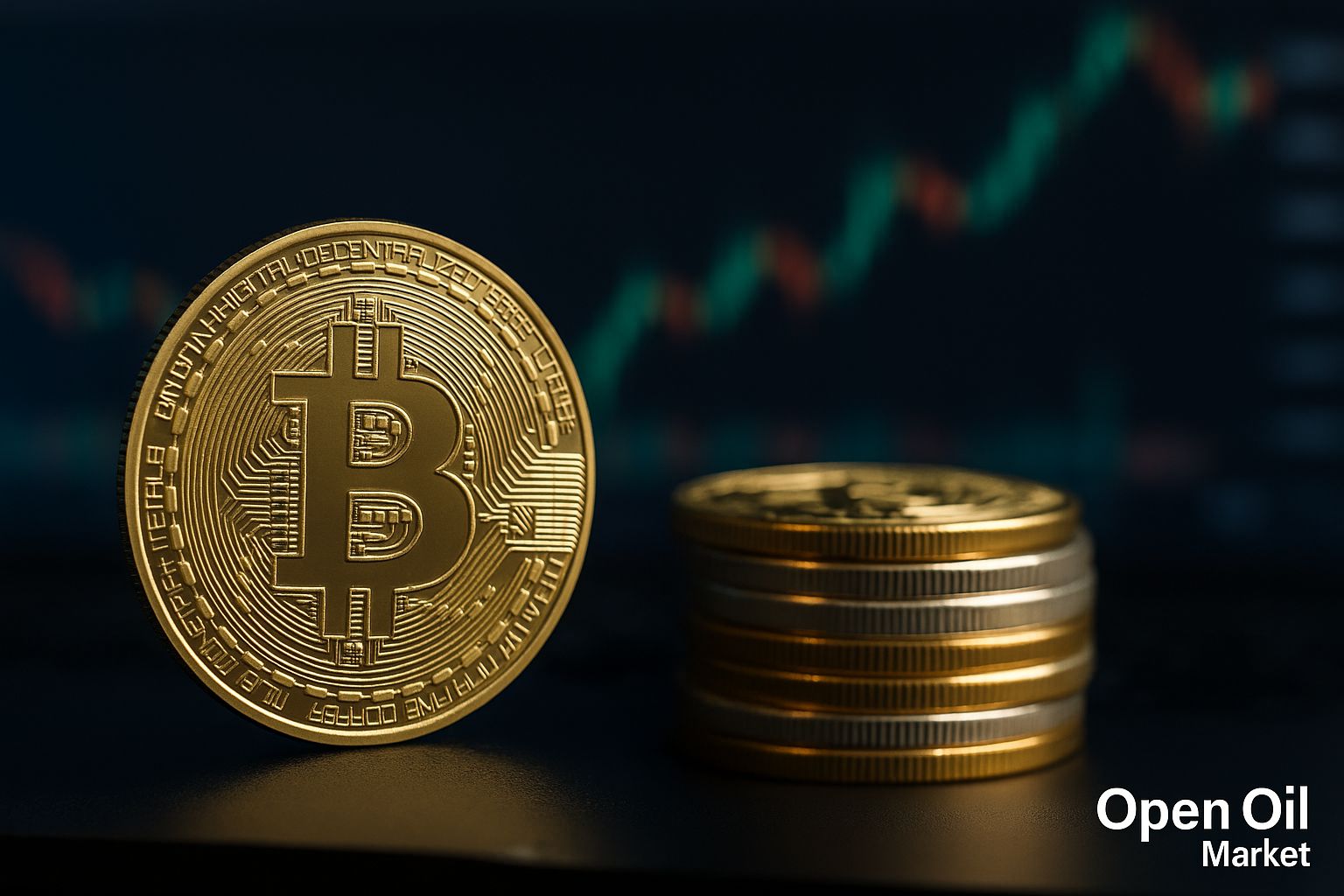
Current Cryptocurrency News as of 30 October 2025: Bitcoin Hits Record High, Altcoins Strengthen Positions, Institutional Investments, ETF Launches, and Market Trends. Forecasts for Investors.
The cryptocurrency market continues to exhibit robust growth amid improving global sentiments. Bitcoin has stabilised near its historical highs, approaching $113,000 per coin, while many altcoins are experiencing rallies. Investors are optimistically welcoming fresh news: the anticipated easing of monetary policy in the United States and signs of de-escalation in trade tensions between the US and China are boosting demand for digital assets. The total cryptocurrency market capitalisation has surpassed $3 trillion, with Bitcoin's market share exceeding 50%, reflecting its dominant position. Overall, sentiments are close to business optimism, although volatility remains, and experts are warning of potential risks.
Bitcoin Near Historical Peak
Bitcoin (BTC) is trading at record-high levels, holding steady around $110–115 thousand, and is only approximately 10% away from its absolute maximum. Over the past week, the leading cryptocurrency has consolidated within a range of around $112,000, forming a new base after its recent spike. Analysts note that support at the $112,000 level is robust – maintaining this mark opens up potential for the next surge towards $116–120 thousand in the near term. Bitcoin's growth in 2025 is impressive at double-digit percentages, reflecting a renewed investor interest in risk assets as monetary policy eases. Bitcoin has also gained support from institutional buyers, with capital inflow into BTC-related investment products hitting new records. However, some observers point out that despite the growth, Bitcoin has yet to outperform traditional markets: the Nasdaq technology index recently reached an all-time high, highlighting a degree of relative "caution" in the cryptocurrency market. Nonetheless, Bitcoin's correlation with stock indices remains positive, and a further rise in equities could also propel cryptocurrency upwards.
Anticipation of Fed Policy Easing
A key factor impacting the digital currency market has been the upcoming decision from the US Federal Reserve. The Fed announced at Wednesday evening's meeting that it had, as expected, lowered the base interest rate by 0.25 percentage points – to a range of 3.75–4.00% per annum. This marks the first rate cut in some time, reflecting a slowdown in inflation and signals of cooling in the economy. Market participants have already priced in expectations of policy easing: the anticipation of cheaper money and the potential end of the quantitative tightening (QT) regime creates a favourable backdrop for cryptocurrency growth. A reduction in interest rates traditionally weakens the dollar and supports demand for risk assets, including Bitcoin and Ethereum. Many investors anticipate that the "dovish" tone of Fed Chairman Jerome Powell will lead to further liquidity inflow into the markets. However, experts warn of the classic "sell the news" effect – following the actual announcement of the rate cut, there could be short-term profit-taking and price fluctuations. An important signal will be the Fed's rhetoric regarding future steps: if the regulator suggests that a pause or caution in further easing is warranted, the cryptocurrency market may take a breather to consolidate. Overall, the Fed's decision has served as a positive driver, enhancing investor confidence in digital assets.
US-China Deal and Global Background
In addition to monetary factors, participants in the cryptocurrency market are closely monitoring geopolitical news. It has been reported that US President Donald Trump and Chinese President Xi Jinping plan to meet in the coming days to finalise a trade agreement. The prospect of easing trade tensions between the world's two largest economies is uplifting global markets. It is expected that the US-China agreement will reduce tariff barriers and strengthen business confidence, which has already led to increases in US and Chinese stock indices. This positively affects cryptocurrencies as well: analysts note that Bitcoin has shown increasing correlation with the stock market in recent years. Improved relations between these two economic superpowers could enhance investors' appetite for risk globally. In Asia, which is traditionally active in cryptocurrency trading, the positive news backdrop is bolstering the inflow of funds into digital assets. Thus, progress in Washington and Beijing's dialogue has become yet another macroeconomic factor supporting the cryptocurrency rally this week.
Altcoin Dynamics: Selective Rally
The altcoin market is exhibiting mixed dynamics: several digital currencies are confidently rising alongside Bitcoin, but the growth appears selective. Many large altcoins are consolidating around important levels, while more speculative tokens are demonstrating spikes in volatility. According to data from CoinMarketCap, the overall "altcoin season" index stands at 26 out of 100, indicating Bitcoin's prevailing leadership in the current growth phase. However, investors are closely monitoring movements in the altcoin segment, where spot rallies are emerging.
- Ethereum (ETH) is holding around the psychological mark of $4,000, occasionally facing selling pressure. Despite a recent correction to approximately $3,900, Ethereum quickly rebounded to $4,000. So far, the second-largest crypto asset has not exhibited rapid growth; however, its resilience suggests sustained investor interest. Potential further easing of Fed policy and inflows into ETH-ETFs create conditions for a new growth phase for Ethereum.
- A number of speculative tokens from the "meme coins" and DeFi sectors have surged sharply over the past day. For instance, the TRUMP token, associated with the former US president, jumped by double-digit percentages following news of its listing on an exchange and expectations regarding the US-China trade deal. Similar dynamics are displayed by other niche altcoins – for example, AERO gained about 7%, reaching a monthly high amid activity in its DeFi sector. These surges reflect an increased risk appetite among certain traders, although they are of a local nature.
- Major altcoins from the top 10 by capitalisation are generally moving more cautiously. For example, Ripple (XRP) is trading around $2.60, consolidating after the rallies of recent weeks. XRP is at its highest levels in several years due to Ripple's court victory over the SEC and expectations for the launch of the first ETFs for this token. Solana (SOL) has approached the $200 mark amid the recent launch of its own ETF in the United States, although it remains below the peaks of 2021. Hedera (HBAR), on the other hand, has retraced approximately 4-5% after the launch of the spot ETF on HBAR – investors took profit on the news. In general, the "blue-chip" cryptocurrencies (ETH, XRP, BNB, SOL etc.) are currently consolidating, and capital inflows into them could resume as the macro backdrop becomes clearer.
Volatility and Risks in the Market
Despite the overall upward movement, the cryptocurrency market maintains high volatility, and experts are urging investors to exercise caution. At the beginning of the week, a sudden price drop ("flash crash") occurred: the total market capitalisation briefly plummeted by approximately 1.5%, and positions worth over $20 billion were liquidated on futures exchanges. The rapid recovery of prices following this episode demonstrated strong demand for leading cryptocurrencies; however, such fluctuations indicate the fragility of market balance amid unexpected liquidity outflows. Well-known economist and long-time Bitcoin critic Peter Schiff has once again warned of the risk of a "bubble" in the cryptocurrency market. He noted that amidst the renewed all-time highs for Nasdaq and rising gold prices, Bitcoin is still trading below its record, and some cryptocurrency-related stocks (like MicroStrategy) remain far from peak values. According to sceptics, Bitcoin's underperformance relative to traditional assets may indicate weak demand and an impending correction. An additional risk factor is limited liquidity: although the Fed is lowering rates, it has yet to transition to stimulatory measures like quantitative easing (QE), so the dollar deficit in the financial system continues to impede capital inflow. In such conditions, professional traders advise against excessive leverage and prepare for price fluctuations. Nonetheless, many market participants view any price retracements as an opportunity to increase positions – as analysts note, large players are buying Bitcoin during dips, considering the ~$112,000 level an attractive entry point.
Institutional Investments and Crypto ETFs
One of the main trends of autumn 2025 has been the rapid expansion of the range of investment products linked to cryptocurrencies available on traditional exchanges. Following the launch of spot ETFs for Bitcoin and Ethereum, American markets have begun trading the first ETFs for a range of altcoins. Over the past few days, spot funds tracking the prices of Solana (SOL), Litecoin (LTC), and Hedera (HBAR) have begun trading on the New York Stock Exchange. The launch of these products marks a new phase of institutional recognition: investors can now access leading altcoins through familiar exchange instruments. Initially, market reactions were mixed – for instance, HBAR's price fell after the ETF launch, reflecting the principle of "sell the news". However, in the medium term, the emergence of altcoin ETFs expands opportunities for capital inflow into the crypto sector.
Inflows into crypto funds have significantly increased: on the day of 28 October, net investments in spot Bitcoin and Ethereum ETFs exceeded $440 million. Notably, Ethereum stood out – the new Ethereum ETFs captured over half of this amount, signalling a growing institutional interest in the second-largest cryptocurrency. Analysts observe that sustained capital inflows through ETFs indicate increased trust from large investors and funds. Moreover, the market is eagerly awaiting regulatory decisions on applications for the launch of the first spot ETFs on XRP (Ripple). The US Securities and Exchange Commission is considering several applications, and experts estimate the chances of approval in the coming months to be very high – up to 99%. The recent settlement of the court dispute between Ripple and the SEC has removed legal uncertainties surrounding XRP, paving the way for such products. The anticipated launch of XRP-ETFs may attract new flows of institutional money and further stimulate growth in the altcoin market.
Regulation and Adoption: Global News
The regulatory landscape surrounding cryptocurrencies remains mixed across different parts of the world. On one hand, some countries are seeking ways to integrate digital assets into their financial systems. In France, an ambitious bill proposing the establishment of a national Bitcoin reserve was introduced this week. According to the initiative from MP Eric Ciotti, the state plans to acquire approximately 420,000 BTC (around 2% of the total Bitcoin supply) over 7-8 years, gradually forming a strategic reserve. The proposal suggests financing purchases through state funds (around €15 million per day) and mining part of the coins domestically using nuclear and hydroelectric power. Additionally, the project provides for retaining confiscated cryptocurrency in the treasury (instead of selling it at auctions) and allows for the possibility of paying taxes in Bitcoin. Although this initiative is still in the consideration stage, it reflects a growing interest from governments in certain countries towards cryptocurrencies as a strategic asset.
On the other hand, several countries continue to impose strict measures against unauthorised use of cryptocurrencies. In China, a court sentenced a group of five individuals to prison terms ranging from 2 to 4 years for illegal currency operations using crypto-assets. It has been revealed that the wrongdoers converted large amounts of yuan into Tether (USDT) and transferred them abroad, circumventing strict currency restrictions. The volume of illegal operations exceeded $166 million. This precedent underscores the continuation of Beijing's policy of strict control over the crypto industry and curtailing attempts to bypass financial regulations through digital currencies. Thus, a divergence in approaches is observed globally: while some countries (the US, European nations) are introducing regulations that effectively integrate cryptocurrencies into the economy, others (China and several developing markets) are tightening prohibitions and penalties. It is crucial for investors to take regulatory risks in different jurisdictions into account when planning their strategies for dealing with crypto-assets.
Top 10 Most Popular Cryptocurrencies
- Bitcoin (BTC) – around $113,000. The dominant cryptocurrency No. 1, with a market capitalisation exceeding $2 trillion. Bitcoin has stabilised close to its historical maximum, cementing its market leadership. Institutional interest and limited supply continue to drive BTC upwards.
- Ethereum (ETH) – around $4,000. The second-largest crypto asset, a platform for smart contracts. Ethereum shows stability and awaits new growth drivers, including the launch of institutional products (ETFs) and network upgrades.
- Tether (USDT) – $1.00 (stablecoin). The largest stablecoin pegged to the dollar. USDT provides liquidity in the market, remaining the primary means of settlement between cryptocurrencies. Its capitalisation is around $85 billion, reflecting high demand for dollar liquidity in the crypto ecosystem.
- BNB (BNB) – around $1,100. The token of the largest cryptocurrency exchange, Binance, and its blockchain ecosystem. BNB has reached new heights due to increased activity on Binance Smart Chain and an expansion of exchange services. The coin has entered the top three by capitalisation.
- XRP (Ripple) – around $2.60. The token linked to the Ripple payment platform. XRP surged in price following Ripple's legal victory over the SEC and on expectations of ETF approvals. XRP is currently holding at multi-year highs and has established itself among the top five cryptocurrencies.
- USD Coin (USDC) – $1.00 (stablecoin). The second-largest dollar stablecoin issued by the Centre consortium (Circle and Coinbase). USDC is utilised by institutional investors to access crypto assets, with a capitalisation of approximately $50 billion. The coin maintains trust through regular auditing reports.
- Solana (SOL) – around $195. A promising layer-one blockchain known for its high transaction speed. SOL has surged sharply in price in 2025, especially following the launch of the first ETF on Solana. While the price has yet to reach the historical peak of 2021 (~$260), Solana remains one of the fastest-growing projects.
- Dogecoin (DOGE) – around $0.19. The most well-known meme cryptocurrency, originally created as a joke. DOGE is back in the top ten thanks to community support and periodic attention from prominent entrepreneurs. In a rising market, Dogecoin is gradually regaining its positions, although it is far from its record high of $0.73 reached in 2021.
- Tron (TRX) – around $0.30. A blockchain platform for smart contracts and decentralised applications, popular in Asia. TRX is showing strong growth, with its current price close to its maximum values in recent years. Tron is actively used for issuing stablecoins and ensures high network throughput, attracting DeFi users.
- Cardano (ADA) – around $0.64. A cryptocurrency and blockchain platform that develops with a focus on a scientific approach (peer review). ADA consistently remains among the top leaders, although its price is still significantly below its historical record (over $3). In 2025, the Cardano project continued its technical updates, strengthening its ecosystem ahead of a new potential growth wave.




